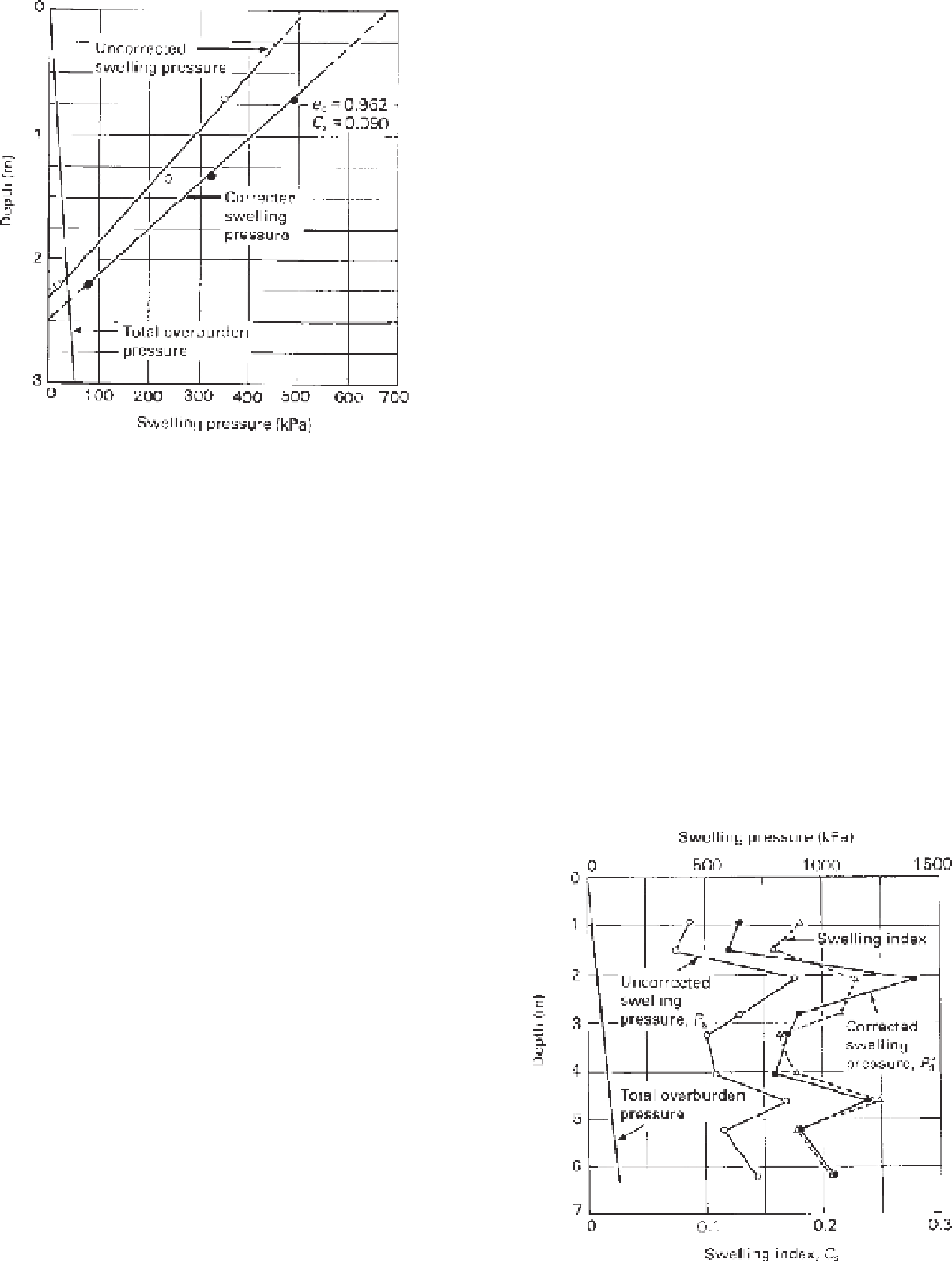Environmental Engineering Reference
In-Depth Information
interior concrete footings. The school was a two-story
structure with classrooms on both the lower and upper lev-
els. The lower floor was approximately 1.2m below grade.
The exterior concrete walls were founded approximately
1.8m below grade.
Substantial heave took place below the interior footings.
Although the record of performance was not precise, appar-
ently the heave in one portion of the basement area had
been noted to be quite extreme. On two occasions during
the history of the school, 150-300mm of soil was removed
from below the interior footings. As much as 450-900mm
of total heave occurred during the life of the school, accord-
ing to maintenance records. Large amounts of differential
heaving of the floor were recorded in 1960. The school was
demolished in 1967.
A subsurface investigation in 1981 was conducted adja-
cent to the location of the old school. Undisturbed soil
samples were taken and constant-volume oedometer tests
were performed. The results are presented in Fig. 14.42.
The average natural water content throughout the profile
was 25%. The average plastic limit was 27%, and the aver-
age liquid limit was 100%. The average swelling index was
0.21. It is not possible to undertake a detailed heave anal-
ysis of heave for the area below the school due to a lack
of detailed information on the soil conditions and the per-
formance records for the school. It is of interest, however,
to perform an approximate analysis for total heave. Using
the corrected swelling pressures from Fig. 14.42 and assum-
ing that the negative pore-water pressures went to zero, the
predicted heave would be approximately 990 mm. The pre-
dicted heave would be about 86% of this value (i.e., on the
order of 855 mm) using uncorrected swelling pressures.
Figure 14.41
Swelling pressure versus depth for Regina clay at
light industrial building site (after Yoshida et at., 1983).
become saturated and the water table rose to the base of
the floor slab. The predicted total heave was 118mm when
assuming that the negative pore-water pressures in the soil
were reduced to zero. The calculated total heave reduced to
66mm when a final pore-water pressure profile of
50 kPa
was assumed. On the basis of the parametric heave analysis,
it appears that the assumption of zero pore-water pressure
was probably the most realistic for this case history. It
appears that further heave would likely have taken place
had the leak not been repaired. The prediction of heave
at various depths showed close agreement with the actual
measurements.
The importance of correcting the swelling pressure mea-
surements can be illustrated by computing total heave using
the uncorrected swelling pressures. The predicted heave was
reduced to 103mm when the final pore-water pressure was
assumed to be zero and the uncorrected swelling pressures
were used in the computations. This is less than the mea-
sured maximum heave and 13% less than the 118mm pre-
dicted using the corrected swelling pressure values.
−
14.5.9 Case History (Eston School, Eston,
Saskatchewan, Canada)
Soils in the Eston area of Saskatchewan have long been
known to be extremely high in swelling potential. The
stratigraphy consists of approximately 7
1
/
2
m of highly
plastic, brown clay overlying the glacial till. Many light
structures have undergone serious distress over the years.
The building of particular interest in Eston was the Old
Eston School constructed in the late 1920s.
The school building was constructed on concrete strip
footings and a wooden basement floor was supported on
Figure 14.42
Swelling pressure and swelling index versus depth
for Eston clay.










Search WWH ::

Custom Search